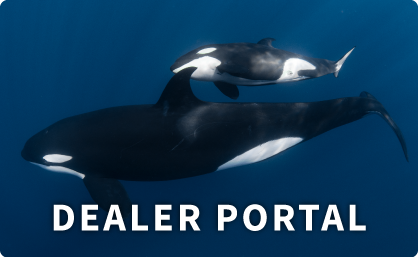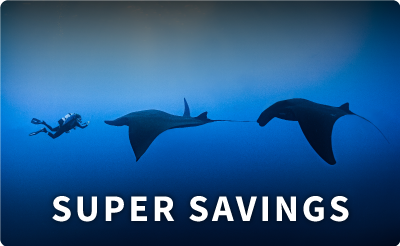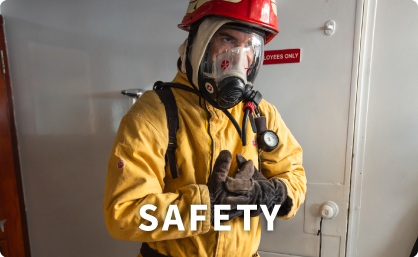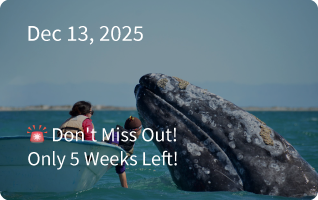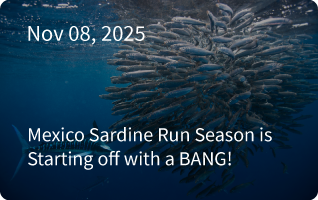Couldn’t help but share the story below. Fascinating stuff. All is well at Guadalupe Island although today has been the quietest sharking of the season.. 21 SEPT 2010. Captain Mike
Jaws exposed: Extraordinary pictures of great whites stripping a whale carcass shows they’re actually quite picky eaters
By DAILY MAIL REPORTER
Last updated at 2:42 PM on 21st September 2010
Last updated at 2:42 PM on 21st September 2010
- Sharks preferred blubber and showed little aggression to one another
Ever since Jaws, great whites have had a reputation as killing machines that has never seemed much point questioning.
However, that could all be about to change – after a study into the fearsome predators’ dining habits.
Scientists towed a 36ft Brydes whale carcass into a well-known hunting ground for the animals in an exercise aimed at documenting how they tackled the huge free lunch.
And these amazing pictures show how up to 30 of them stripped a single whale carcass – and gave an ‘extraordinary’ insight into how the much-feared predators behave.
But while many would have expected a feeding frenzy and potentially lethal fights between the razor-teethed gians, the behaviour observed was quite different.
The sharks appeared to select choice cuts of the dead whale and did not appear to be aggressive towards each other.
Alison Kock, 33, the principal scientist at Save Our Seas Shark Centre and Shark Spotting Programme, at Cape Town South Africa, said: ‘Contrary to their reputation as mindless killers, the level of selectivity for which parts of the dead whale they ate was extraordinary.
‘They targeted the energy-rich blubber, often making repeated “test bites” where no flesh was removed, and removing flesh only once they had determined it was what they wanted. If they got a mouthful of muscle, they often spat it out.
‘They were very picky.’
It’s thought the huge whale was killed after being struck by a boat and was found floating towards Miller’s Point near Cape Town, South Africa, where the clean up operation for the local authorities would have been difficult as their huge bodies are harder to remove on land.
It was also feared the body – giving off oils that attract predators like sharks – may have drawn in great whites to an area frequented by swimmers.
Kock added: ‘Permission was granted by the authorities to have the dead whale towed to nearby Seal Island where the carcass was less of an issue and the sharks could help solve the clean-up problem.
‘In addition it provided an unparalleled opportunity to document white shark behaviour and record the number of sharks in the area.
‘Whale carcasses are believed to be a very important source of food for white sharks with some scientific evidence suggesting they follow whale migrations possibly to, opportunistically feed on dead or sick whales.’
During the nine-day experiment, which ended on Saturday, Kock and her team made some shocking discoveries, including the fact that the sharks seemed to have a huge preference for soft blubber over tough muscle.
‘In the case of the whale carcass the sharks knew exactly what they wanted,’ said Kock.
‘It provides evidence that when they bite into a surfboard, or kayak or person wearing a wetsuit they can immediately determine it’s not something they want to eat.
‘It’s very common in attacks on humans for white sharks to take a single bite and leave it at that. Our study provides more evidence that they are simply tasting and looking for meat that is nutritious. It shows that they are not just swimming around mindlessly eating everything they come across, as they are sometimes portrayed.’
She added: ‘I was surprised at the total number of white sharks that fed on the dead whale over the nine days we documented the event. We recorded over 30 different sharks in total. At one stage we had up to four white sharks feeding simultaneously on the carcass.
‘The first two days were the busiest with the most sharks, and the activity slowly decreased as the sharks had their fill. The last two days we recorded no sharks feeding on the carcass.
‘Many of the sharks I recognised as individuals hunting seals around the island from this shark season, as well as previous years. We used their unique dorsal fins to identify them, but there were also new sharks that I had never seen before.
‘The sharks showed very little aggression towards one another in the presence of such a large food source, often feeding side by side.
‘Some of the sharks we observed were gorging on the blubber and you could actually see their bellies getting fuller.
“Some would arrive quite skinny and by the end of their session they looked pregnant with their bellies bulging.’
“Some would arrive quite skinny and by the end of their session they looked pregnant with their bellies bulging.’
During the study, the sharks reduced the carcass down to less than seven feet (two metres) of bone and muscle, having removed all the blubber.
Shark enthusiast Kock, added: ‘This is the ultimate example of the very important role sharks play in the ecosystem. That of recycling life, and of keeping our oceans healthy by removing dead and decaying animals like dead whales.’
Upper left – Free lunch: The 30 great white sharks were provided with a whale carcass so scientists could study their eating habits
Upper right – Tasty findings: Alison Kock was the principal scientist at Save Our Seas Shark Centre and Shark Spotting Programme, at Cape Town in South Africa and was surprised by the sharks
Lower left – Jaws: Alison Koch said: ‘Contrary to their reputation as mindless killers, the level of selectivity for which parts of the dead whale they ate was extraordinary’
Lower right – Blubber: During the nine-day experiment Kock and her team made some shocking discoveries, including the fact that the sharks seemed to have a huge preference for soft blubber over tough muscle

